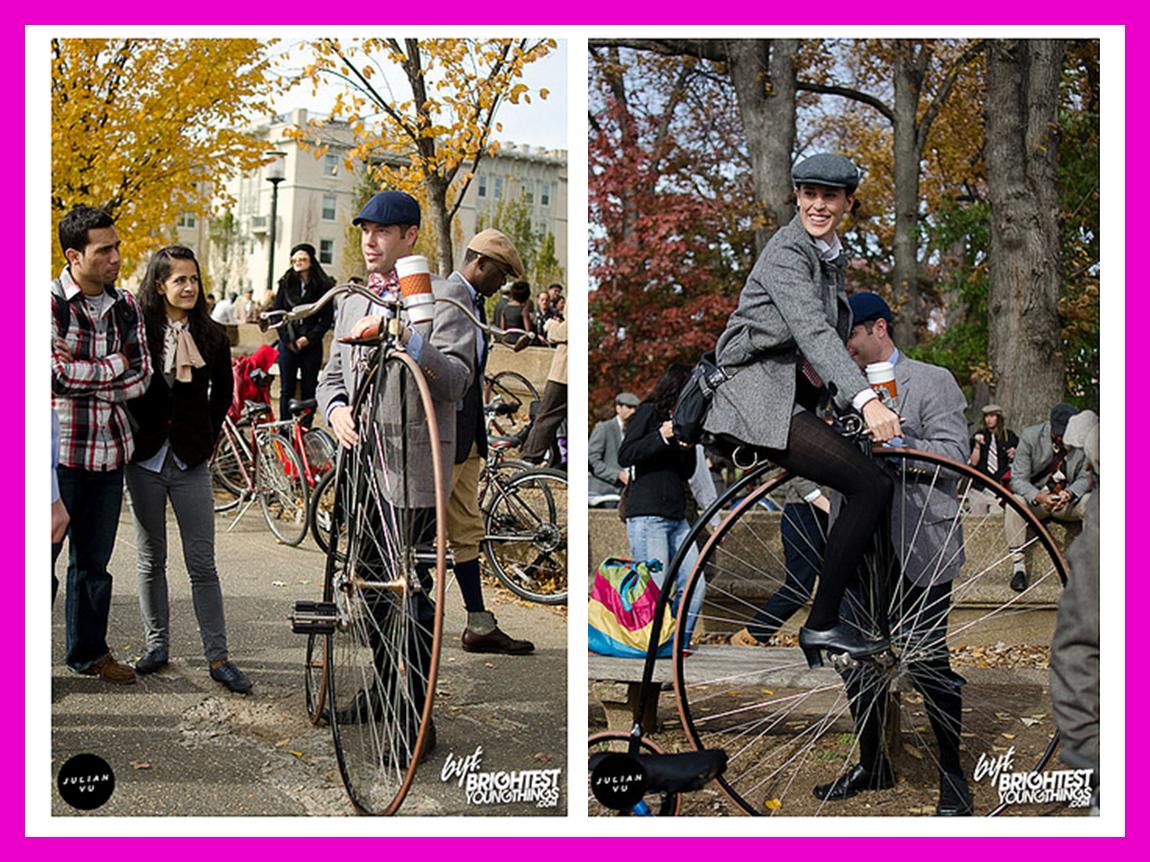I came across this post a couple weeks back about the “11 Sounds That Your Kids Have Probably Never Heard” and it got me thinking about hipsters, nostalgic revivalism, and technological regression as a source of authenticity.

First, some comments need to be made about hipsters. By now you have heard about the “Hipsterification Of America,” as fashion and lifestyle trends of New York bohemians have diffused across the nation into the recesses of most urban cities. In the words of Linton Weeks:
On the streets of Franklin and Nashville and almost every town throughout America now, hipsters scuttle by on scooters, zip around in Zipcars or Smart cars, roll by on fixed-gear bikes or walk about in snazzy high-top sneakers and longboard shorts. They snap Instagram photos of each other — in black skinny jeans and T-shirts with funky epigrams like “If You Deny It, You Are A Hipster” — and turn the pix into iPhone cases. They buy cool-cat snuggle clothes at American Eagle and down-market monkey boots at Urban Outfitters. They drink cheap beer, listen to music on vinyl records and decorate their lairs with upcycled furniture.
They follow indie bands and camp out at Occupy movements. They work as programmers and shop clerks, baristas and bartenders. They are gamers and volunteers, savvy entrepreneurs and out-of-work basement dwellers.
I will save discussions of hipsters themselves for another day, but for this discussion, you need to know about how hipsters look to the past as a source of authenticity. As Nathan Jurgenson has written about in his work on faux-vintage photography, the obsession with antiquated technologies can best be described as “grasping for authenticity.” Hipsters look to the past as a source of authenticity, attempting to ground themselves in the stability of past epochs, a time before digital communications and mass mediated technologies, a time when identity seemed more stable and “real.” So hipsters turn to analog technologies as a source of authenticity, shunning the ease of many new digital technologies that turn technical skill into a manner of button-mashing.

Why so much concern with authenticity? Because authenticity is the hallmark of the hipster. The entire hipster identity revolves around questions of authenticity and difference. Difference from the mainstream, difference from their parents’ generation, difference from the labels of popular culture. These differences provide the hipster with a source of distinction (Bourdieu 1984), distinguishing themselves from the passive masses of mainstream society and giving them a sense of superiority (hence the perceived elitism of the hipster). And this is also why hipsters are so keen on shunning the label of “hipster” altogether. To admit being a hipster is to accept the label, negating the free-spirited foundation of the hipster code. You cannot label the unlabel-able. Or so the hipster code goes.
Secondly, hipsters are at the forefront of movements of nostalgic revivalism. By nostalgic revivalism, I mean the rebirth of antiquated technologies, art, and fashion trends, a sort of simulated vernacular that draws on many myths of previous epochs, becoming a white-washed image of the past reinterpreted to serve the present. The hipster market has led to the successful proliferation of Urban Outfitters and American Apparel’s across the United States, fostering fashion and music trends that now permeate into even the most corporate of America’s cathedrals of consumption (for example, as I sit typing this post in Jason’s Deli, I hear the sounds of Icelandic-indie chart toppers Sigur Ros playing on streaming radio above me). Perhaps more importantly, “the hipster market” has led to the re-popularization of many analog technologies of days gone past. For example, the rising popularity of the vintage photography equipment, the proliferation of “retro-tech” at #Occupy, a variety of online blogs (such as this one), the re-birth of vinyl, etc.
However, the disheveled bohemian look sported by the contemporary hipster neo-tribe is nothing but a simulation of the past, reconstructed in the present (Baudrillard 1994). It draws on tired semiotic images of the past in order to construct a simulated present. Much like the punk movement, which was known for pilfering extinct subcultures and recombining them into a pastiche of post-subcultural style (Muggleton 2000), today’s hipsters continually reinvent the past with their appropriation of past cultural forms.
For the hipster, the past becomes a source of authenticity because of the profound nostalgia hipsters feel for days before the “lamestreamers” stole their subcultural forms. This nostalgia is largely constructed, and born out of a idealization of the days of their parents (hence hipster’s profound love of popular fashions from the 60s, 70s, and 80s). And because authenticity is intimately linked with the minutia of subcultural knowledges, a profound awareness of one’s “first encounter” with a particular band, brand, or fashion becomes a powerful “founding narrative” for the hipster identity (for an example of hipsters, narratives, and brand identities, see [Arsel 2010; Kantor 2011]) . It is a way of claiming allegiance to a particular lifestyle or taste culture (Gans 1974), a way of placing oneself at the forefront of cutting edge fashions and trends. The oft-mentioned cliche, “I liked them before they were cool” becomes a mantra of identity, proclaiming one’s status at the core of the subculture and casting all others as mere followers. This saying, itself a form of symbolic violence, aims to preserve the subcultural capital (Thornton 1996) of hipsters as underground taste arbiters, trendsetters of the digital age.

In conclusion, I would have to argue that most of the 11 technologies presented in the above blog post will continue to be kept alive by hipsters in America’s urban cities. With a profound desire for authenticity, the hipsters of today continue to revive antiquated, analog technologies like rotary telephones, record players, typewriters, and vintage television sets, largely to capture the subcultural capital such technologies provide to the bearer. To the hipster, these technologies confer a physicality that many digital technologies lack. This physicality provides an aura of materiality, which provides a source of authenticity to those of us who grew up in the digital age. It would appear that technological regression, a backwards looking view of technology, serves the interests of nostalgic youth seeking authenticity in a postmodern age, where the boundaries of subcultural style no longer segregate taste cultures as strongly as they used to.

Comments 8
Matt Rafalow — November 25, 2011
Interesting post! Shows how fertile the ground is for research that examines how culture informs use of tech.
genemorrow — December 9, 2011
I just wanna say that I sort of lobe hipsters for bringing back some of this shit. Especially the pennyfarthing! They are kind of beautiful and ridiculous at the same time.
Soft Revolution » Blog Archive » Grassroots Internet Revolution — December 10, 2011
[...] Hipster Rivivalism: Authentic Technologies of Days Gone Past su Cyborgology. Sull’uso di tecnologie analogiche come fonte di [...]
Hipsters, DIY Distribution, and Technological Regression » Cyborgology — December 12, 2011
[...] I wrote a few weeks back about technological regression as a source of authenticity for members of the contemporary hipster subculture (I say “contemporary” because hipsters emerged out of the 1950s beatniks, the original hipster subculture). So lets apply that logic to the case of Plan-It-X and take it a bit further. [...]
Hipsters & technological regression as a source of authenticity… (by Dave Paul Strohecker) | Autodespair — December 13, 2011
[...] "…I wrote a few weeks back about technological regression as a source of authenticity for members of the contemporary hipster subculture (I say “contemporary” because hipsters emerged out of the 1950s beatniks, the original hipster subculture). So lets apply that logic to the case of Plan-It-X and take it a bit further. [...]
Nostalgia: The Third Wave « The Frailest Thing — December 28, 2011
[...] to update the British journalist’s comments to fit the contemporary circumstances. Just add Hipster Revivalism and replace the television dramas with Mad Men, Boardwalk Empire, Downton Abby, and Pan Am. (See [...]
Hipsters and Low-Tech » Cyborgology — September 27, 2012
[...] have been much discussed on the Cyborgology blog (see: here, here, here, and here). Cyborgology authors have also talked about the fetishization of [...]
Hipsters and Low-Tech « PJ Rey's Sociology Blog Feed — October 4, 2012
[...] have been much discussed on the Cyborgology blog (see: here, here, here, and here). Cyborgology authors have also talked about the fetishization of [...]